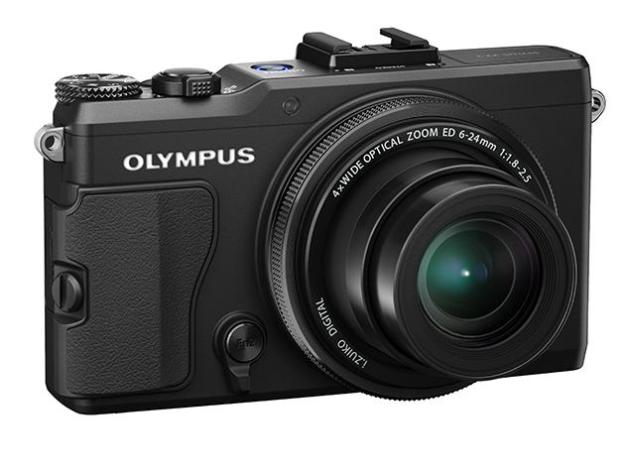
Check out our full reviews of the Olympus Stylus XZ-2 iHS and the Olympus PEN E-PL5 digital cameras.
It’s Photokina time and you know what that means: All the hot names in digital photography are bringing out the big guns, refreshing their existing lineups and introducing all-new models into the mix. And Olympus is no exception, this morning officially unveiling the Stylus XZ-2 iHS, the PEN E-PL5, and the PEN E-PM2.
The XZ-2 (pictured at top) picks up where the XZ-1 left off, but will now fall under the Stylus umbrella (previously, it was in a family of its own, the X-series, but Olympus has decided it will be housed by its point-and-shoot lineup). If you remember, the XZ-1 was a fairly one-a-kind device introduced back 2010, a big-bodied point-and-shoot with DSLR tendencies – something we’re increasingly seeing in the market. Now, the XZ-2 offers a really nice update to the original but keeping, more or less, the same sleek, professional exterior.
The refresh houses the same F1.8-2.5 lens and 4x optical zoom as the XZ-1, but does its predecessor one better with a 12 megapixel, 1/1.7 inch high-sensitivity backlit CMOS sensor and the TruePic VI processor (same as in Olympus’s top of the line OM-D E-M5), which should help considerably its low-light performance (something the XZ-1 could handle, but not impressively well). You can push the camera’s ISO up to 12800, for the record.
Also new to the XZ-2 is its hybrid control ring, which you can customize to have the nice, hard click or a smoother feel – something that will come in handy when shooting video in manual. You can also choose what the ring controls; focus, zoom, exposure… it’s incredibly versatile. Also worth mentioning is the XZ-2’s 3-inch tilt-angle touchscreen, a feature Olympus’ is increasingly packaging with its new releases. In our quick hands-on with the camera in August, these two new additions in particular stood out. It’s a considerable upgrade to the XZ-1, a camera we loved, and the increased manual controls and the promise of better low-light performance are a tempting combination.
Olympus is taking a modest approach to Wi-Fi sharing with the XZ-2 as well, making it connection friendly with the help of a Toshiba FlashAir SDHC card. There’s also an upcoming app from Olympus that allows for easy upload to your smartphone. The XZ-2 will be available in November for $600.

For starters, both cameras have the 16 megapixel MOS sensor and TruePic VI processor as the OM-D E-M5 and can push ISO to 25600. They’ve also improved their AF systems, and shutter and release speed has also been increased – max frame rate is now boosted to 8 fps in single AF mode. The E-PL5 and E-PM2 also both have 3-inch LCD displays with anti-finger print coating and new tilting capabilities that let the screens flip up for easy self-portraits or video recording.

The E-PL5 will cost $700, and the E-PM2 $550 (both body only and available in October).


